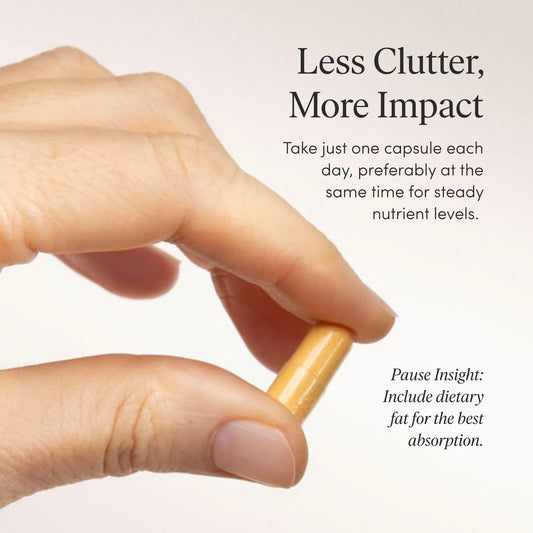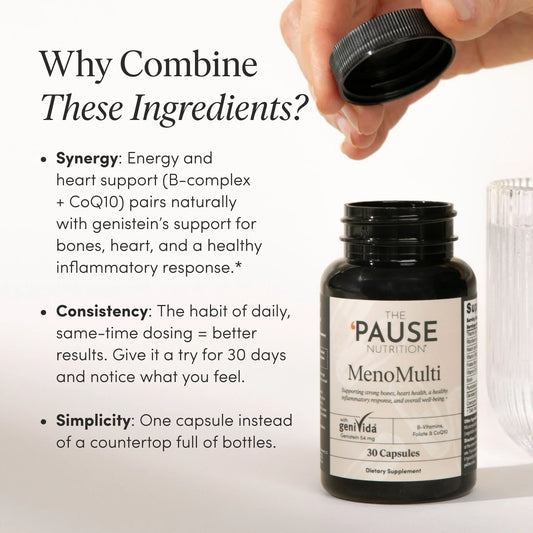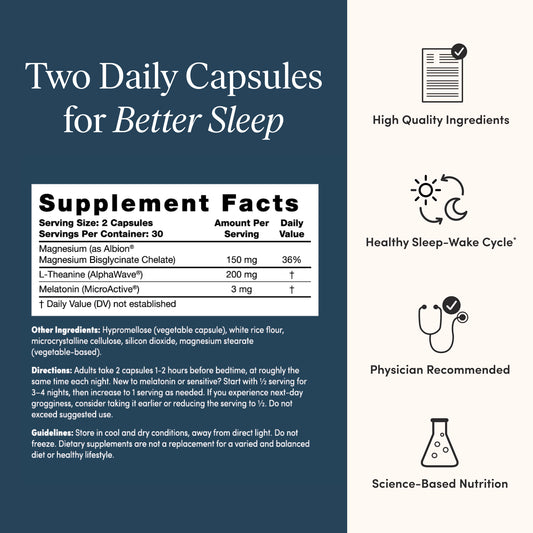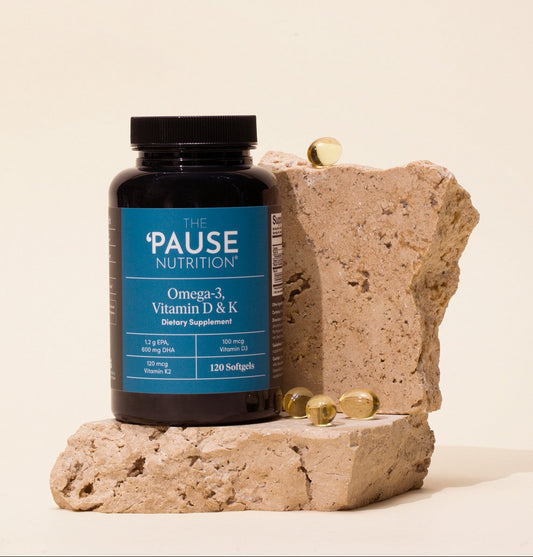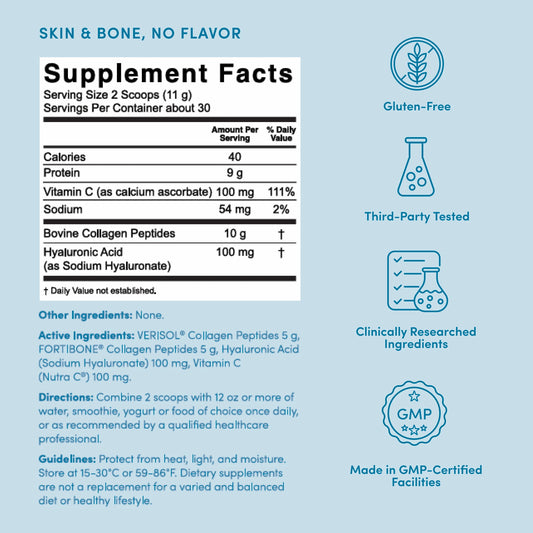How Does Your Race and Ethnicity Affect Your Menopause Experience?
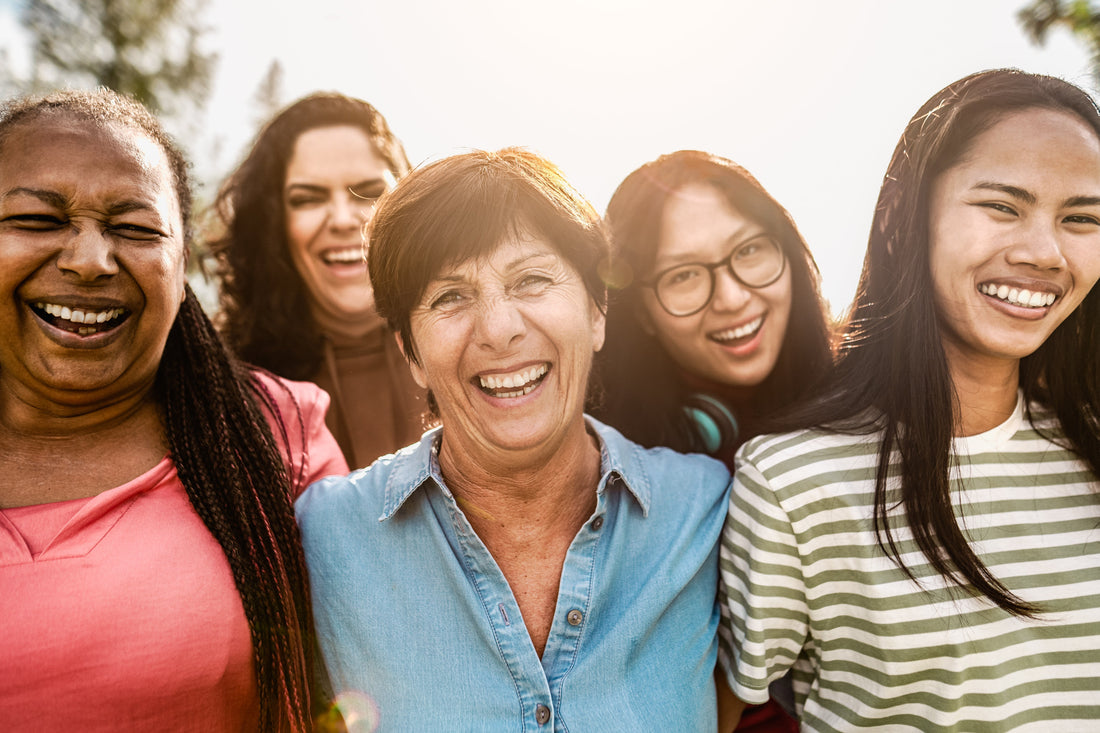
Share
For many of us, when we hear the word menopause, we automatically think of a woman sweating and fanning herself thanks to one classic symptom: hot flashes. Whether in (bad) comedy or medical literature, those two phenomena seem inextricably linked.
Most of what we know about menopause is from scientific studies of large groups of women. But one issue with many of these otherwise excellent studies is that the overwhelming majority of women they studied were white. So the story we have of the average menopause experience (1)—- you’re 51 years old with hot flashes, vaginal dryness and brain fog that last for about 6.5 years — is based on what menopause looks like for a white woman. In some studies, Latina and Black women were specifically excluded (2).
In actuality, we have had an incomplete picture of what menopause has looked like for most women of color. Thanks to emerging research, and conversations with my colleagues, including Dr. Karen Tang, Dr. Sharon Malone, Dr. Rocio Salas Whalen, and Dr. Sameena Rahman, I’ve learned that the menopause transition can be very different for women of color.
I’ve learned that menopause can start earlier, with more severe symptoms or very different symptoms—that don’t include hot flashes. The popular misconception that menopause is just about hot flashes is leading to many women’s health concerns being ignored and left untreated, which can worsen serious existing health disparities.
That’s why my team at The ‘Pause Life and I decided to share more information on how perimenopause and menopause can be different for women of color. This first article gives an overview of the issue, while follow-up articles will take a deeper dive into the challenges that specific ethnic groups face, recommendations on what you can do to thrive during menopause, online support communities to join, and studies you can share with your doctor.
Why Menopause Symptoms Matter
While I always like to remind people that the menopause transition is about a lot more than symptoms like hot flashes and night sweats, vasomotor symptoms like these do serve a purpose. Unpleasant symptoms can alert women that menopause is coming. It’s time to start talking to other women in your family, friends, and clinicians about what’s going on with your body.
As estrogen levels decline, a complex range of changes happens in women’s bodies. We start losing collagen, our arteries start becoming less flexible, we may start gaining visceral belly fat, and our muscle and bone density decline. Recognizing symptoms early is important because the sooner you start adjusting your eating, movement, and stress reduction habits for this phase of life, the better. You and a menopause-informed clinician may also have a conversation about hormone replacement therapy and decide if it makes sense for you.
With that in mind, we’re sharing the average menopause age and top symptoms to look out for so you can better advocate for yourself and take steps to protect your health through menopause and beyond.
A UNIVERSAL EXPERIENCE
We uncovered one issue with bone health that’s a disparity for all women of color. A Harvard University study found clinicians are less likely to screen women of color for osteoporosis (3) compared to white women. And even if diagnosed with loss of bone density, women of color are less likely to receive medication or follow-up care even after a fracture, and they’re more likely to die after an osteoporotic fracture (3), according to that same 2022 Harvard study.
Women can start losing bone density in their 30s, though most women aren’t diagnosed with osteoporosis until after a fracture. If you’re classified as “low risk” for osteoporosis, you won’t get screened until 65. Depending on your risk factors, your insurance may pay for an early screening, so have that conversation with your clinician. A DEXA scan is a state-of-the-art way to help you know where you stand with bone health. And then if needed, you can work on trying to rebuild strong bones.

HISPANIC/LATINA
- Average menopause age for Latina women: 49 (4)
- Most common menopause symptoms in Latina women:
- 81% Fatigue/low energy
- 80% Sleep disturbances
- 80% Weight changes
- Most severe symptom: Skin + hair changes
There are more than 65 million people of Hispanic origin in the US, representing 19% of the US population. Latinas are the largest group of ethnic women, and by age 31 they are often the breadwinners and heads of their household. (5) It’s a lot of pressure. And then comes perimenopause.
A 2024 study of more than 68,000 women (6) who were obtaining menopause care from the telehealth company Evernow, looked at whether race, ethnicity and socioeconomic status affected the severity of menopause symptoms. It found that Latinas’ top complaints were low energy, sleep disturbances and weight changes. Their most severe symptoms were skin and hair changes, mood swings and unusual periods.
Groundbreaking research by Yamnia I. Cortés, PhD, director of the Cortés MenoLab at The University of Iowa College of Nursing highlights that post menopausal Hispanic women have the highest rates of metabolic disease (7) of any race and they’re twice as likely to have depressive symptoms. And if Hispanic women have vasomotor symptoms, they can last up to 8.4 years, compared to 6.5 for white women.
A lack of education about the symptoms and available therapies is one of the biggest challenges for Latinas, says Dr. Rocio Salas-Whalen, a New York physician who is triple board certified in endocrinology, internal medicine and obesity medicine. ”I think with women of color the problem is the lack of more education, I think most of what we're seeing now is directed to white American women,” says Salas-Whalen, who is originally from Mexico. “The patient that knows more, does better, I always say.”
BLACK
- Average menopause age for Black women: 48-50 (8)
- Most common menopause symptoms in Black women:
- 81% Sleep disturbances
- 79% Hot flashes
- 76% Fatigue/low energy
- Most severe symptom: Hot flashes
There are about 42 million Black people in the United States, making people of African descent 13.5% of the population. And when it comes to menopause Black women hold a few negative distinctions: they have one of the longest and toughest menopause transitions of anyone. “Black women tend to enter perimenopause and menopause a year earlier, their symptoms last on average a decade and their symptoms are more severe,” says Dr. Sharon Malone, a Washington DC based OB/GYN for 30 years.
Black women start having hot flashes earlier in perimenopause, and they’re twice as likely to have vasomotor symptoms (9) compared to white women. According to the Evernow study, those vasomotor symptoms are more severe, and are accompanied by sleep disturbances and fatigue. But the worst part of it may be that when Black women tell clinicians about their symptoms, they’re less likely to be believed or offered medication like HRT.
“So when you put that in there and then you say they’re less likely to be treated for their symptoms, that’s a lot of suffering,” says Malone, Chief Medical Advisor for Alloy Women’s Health, a telehealth company focused on menopause care. “Just think about that: that’s a long time to not be feeling well.” She wrote her book Grown Woman Talk: Your Guide to Getting and Staying Healthy to help women better advocate for themselves.
Having symptoms ignored “creates what we would call a health inequity,” says Dr. Jessica Shepherd, a board-certified OB/GYN based in Dallas. “This has a ripple effect in long term factors of lifestyle and lifespan.” Research shows untreated hot flashes put women at greater risk (10) for strokes, osteoporosis and cardiovascular disease. And Black women generally start menopause with health issues due to chronic stress. Shepherd outlines ways to find a provider who listens and feels empowered through menopause in her new book: Generation M: Living Well in Perimenopause and Menopause.
EAST ASIAN
- Average menopause age for East Asian women: 48-50 (11)
- Most common menopause symptoms in East Asian women:
- 75% Sleep disturbances
- 72% Fatigue/low energy
- 72% Weight changes
- Most severe symptom: Heart discomfort
The word ‘Asian’ includes more than 30 ethnic groups, including people with origins in Japan, Thailand and China. So, it's a real challenge to speak broadly about what menopause is like for Asian women. And, tragically, relatively few Asian women have been included in large US studies. But from international studies, we know that most East Asian women tend to enter menopause between 48 and 50.
For many years, there was a belief that East Asian women skated through menopause symptom-free, but that’s not true. “It was this myth that Asians were less likely to have menopause symptoms I think because they were only looking at hot flashes and night sweats,” says Dr. Karen Tang, an OB/Gyn in Exeter, New Hampshire and author of It’s Not Hysteria: Everything You Need to Know About Your Reproductive Health (But Were Never Told). “In general Asian women have much more common musculoskeletal syndromes.” The Evernow study noted that the most severe symptom for Asian women was heart discomfort, which includes heart palpitations or rapid heartbeat that can happen when estrogen levels start to decline.
In 2005, the Pan-Asian Menopause study (12) looked at menopause symptoms among 1,028 women from nine ethnic groups. The most common symptom for all of them was body aches or joint pain, which affected 76% of women in the study. And overall, these women had fewer vasomotor symptoms like hot flashes and night sweats. For example, 93% of Indonesian women had body aches, but only 5% had hot flashes. The one hot flash exception was Chinese women, especially those more acculturated to a Western way of life: they had hot flashes similar to white women.
SOUTH ASIAN
- Average menopause age for South Asian women: 49-51 (13)
- Most common menopause symptoms in South Asian women:
- 80% Sleep disturbances
- 76% Weight changes
- 71% Fatigue/low energy
- Most severe symptom: Weight changes
There are an estimated 5.4 million South Asians in the US, with heritage from countries including India, Nepal, Bangladesh and Pakistan. And even though they live here, the customs around women’s reproductive health are still rooted in the taboos and traditions of the old country. “No one talks about menses. No one talks about menses ending, no one talks about sex,” says Dr. Sameena Rahman, a Chicago-based OB/Gyn whose parents emigrated from Pakistan in the 1960s. “In fact, if anything, it’s shameful.”
While South Asian women reported trouble sleeping, weight gain and tiredness like other women, according to the Evernow study, their degree of weight gain was 3 times as severe as that seen in white women. Much of menopausal weight gain tends to be visceral belly fat around the organs that can set women up for serious health issues like insulin resistance and cardiovascular disease. “Pakistan has the highest rate of diabetes in the world, so the immigrants tend to as well,” Rahman says. “Statistically, South Asians are about 25% of the world population, but 60% of the world’s heart disease.” And South Asian women have heart attacks at a younger age, often under 40, and they tend to be more fatal (14).
That’s why Rahman, known as @gynogirl on Instagram, is so outspoken about menopause and educating women about protecting their health during this transition.
NATIVE AMERICAN/FIRST NATIONS
- Average menopause age is likely earlier than for white women.
- Most common menopause symptoms in Native American Women:
- 89% Fatigue/low energy
- 84% Brain fog
- 83% sleep disturbances
- Most severe symptom: Painful sex
A 2010 Canadian study that interviewed 18 First Nations women found that some groups lacked a specific word for menopause. Indigenous women were more likely to call it “the change” (15) or the “time when periods stop (16).” Traditionally, it’s not a topic that‘s discussed with doctors or even in families. Some women in the Cree Nation bands around Alberta recalled their mothers telling them it was “really nothing.” (17) There’s a profound lack of data around when most First Nations/Native American women enter menopause, though it’s believed to be earlier than white women.
In the Evernow study, indigenous women reported that fatigue, brain fog and sleep issues were the most frequent menopause symptoms. But their most severe symptoms were painful sex, weight changes and body aches. They also indexed higher than white women for severity of anxiety/depression and fatigue.
In a 2014 University of Washington study, Native American women in their 30s and 40s reported the highest number of hot flashes (18) of any group. First Nations women in Alberta, Canada also described intense hot flashes that felt like “getting hot from inside like a firecracker,” in the 2022 Alberta community study (17).
Women in that study also said they were trying to be more open with their families about the transition. Overall, this life stage was seen as a time when women could look forward to greater freedom and more respect in their culture as wise women with knowledge to share.
MIDDLE EASTERN
- Average menopause age for Middle Eastern Women: 48-49 (19)
- Most common menopause symptoms in Middle Eastern Women:
- 75% Sleep disturbance
- 74% Weight change
- 72% Brain fog
- Most severe symptom: Weight changes
Middle Eastern women are a diverse group that includes people from Saudi Arabia, Kuwaiti, Iran and Lebanon. As a group, they tend to enter menopause at 48 or 49, which is two to three years earlier than American white women.
While Middle Eastern women in the Evernow study had the same main symptoms as others, the most severe issues were weight changes and fatigue. That finding aligns with a 2007 survey of 200 Middle Eastern women in Sydney, which found the two most common menopause symptoms were feeling tired and body aches (20), affecting 86% and 85% of the women in the study, respectively. Researchers also noted that of the 197 women in the study, women who had a better education and lower body mass index had fewer symptoms.
Dr. Noor Al-Humaidhi, who runs a women’s midlife health practice called Lifestyles by Noor in Exeter, Pennsylvania, says the Arabic word for menopause, (roughly sin ya’s in English), means “age of despair.” So while wise aunts and grandmothers are respected and valued, traditionally, the menopause transition isn’t discussed openly. And very few women get helpful modern treatment, such as hormone therapy, to help deal with their weight gain, which can lead to other serious health conditions.
“Women have a very high rate of metabolic syndrome, so cardiovascular disease and type two diabetes, as they transition through menopause,” says Al-Humaidhi, whose father is Kuwaiti. “They estimate that over 50% of women in menopause in the Middle Eastern countries have metabolic syndrome.” On top of that, there are high rates of osteopenia and osteoporosis across the region as well, since there’s not a big emphasis on building muscle and the harsh climate keeps people inside.
As you can see, menopause can present different symptoms and challenges depending on your race and ethnicity. I hope you’ll feel confident to trust what you’re experiencing, even if it doesn’t match the classic idea of menopause. In following articles, we’ll dive deeper into what menopause can be like for women who are Latina/Hispanic, Black, Asian and Middle Eastern, and what you can do to thrive through this change.


















